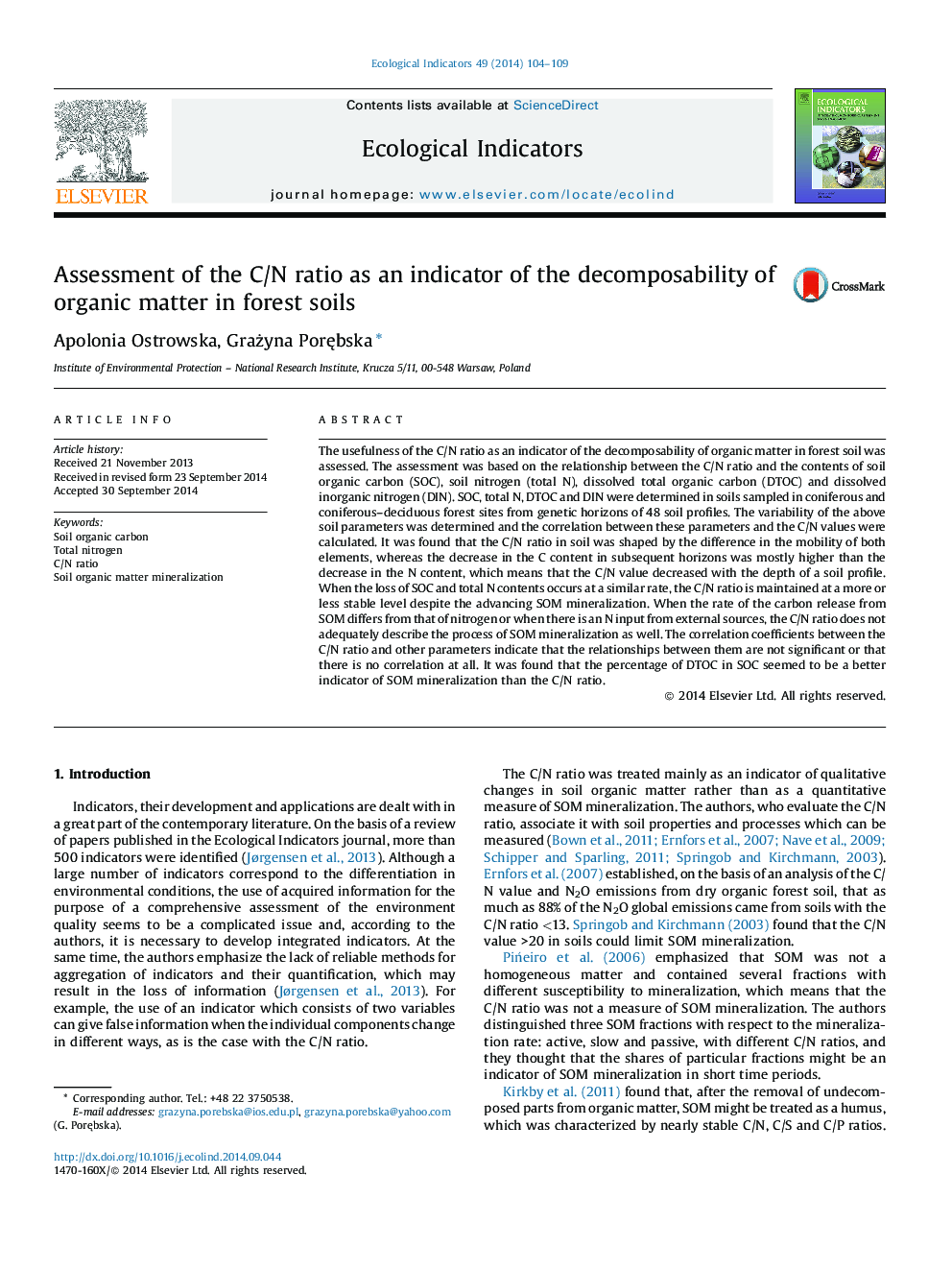| Article ID | Journal | Published Year | Pages | File Type |
|---|---|---|---|---|
| 6294793 | Ecological Indicators | 2015 | 6 Pages |
Abstract
The usefulness of the C/N ratio as an indicator of the decomposability of organic matter in forest soil was assessed. The assessment was based on the relationship between the C/N ratio and the contents of soil organic carbon (SOC), soil nitrogen (total N), dissolved total organic carbon (DTOC) and dissolved inorganic nitrogen (DIN). SOC, total N, DTOC and DIN were determined in soils sampled in coniferous and coniferous-deciduous forest sites from genetic horizons of 48 soil profiles. The variability of the above soil parameters was determined and the correlation between these parameters and the C/N values were calculated. It was found that the C/N ratio in soil was shaped by the difference in the mobility of both elements, whereas the decrease in the C content in subsequent horizons was mostly higher than the decrease in the N content, which means that the C/N value decreased with the depth of a soil profile. When the loss of SOC and total N contents occurs at a similar rate, the C/N ratio is maintained at a more or less stable level despite the advancing SOM mineralization. When the rate of the carbon release from SOM differs from that of nitrogen or when there is an N input from external sources, the C/N ratio does not adequately describe the process of SOM mineralization as well. The correlation coefficients between the C/N ratio and other parameters indicate that the relationships between them are not significant or that there is no correlation at all. It was found that the percentage of DTOC in SOC seemed to be a better indicator of SOM mineralization than the C/N ratio.
Related Topics
Life Sciences
Agricultural and Biological Sciences
Ecology, Evolution, Behavior and Systematics
Authors
Apolonia Ostrowska, Grażyna PorÄbska,
